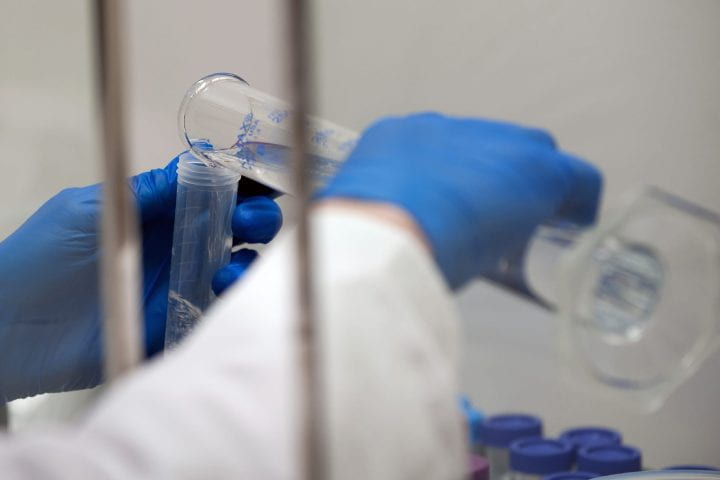Intelligent design
UCI’s new and retrofitted Smart Labs employ occupancy and air-quality sensors to cut energy use by 50 percent.

If research labs account for two-thirds of a campus’s carbon footprint, it doesn’t take an Einstein to target them for energy savings. Where the genius comes in is figuring out how to do it, and when UC Irvine engineers put their brains to the problem, they came up with Smart Labs – systems that can reduce energy consumption by up to 50 percent in new and retrofitted labs. UCI’s Facilities Management and Environmental Health & Safety divisions are now receiving nationwide recognition as they share their problem-solving wizardry with other campus, private-industry and government labs.
“Until recently, most attempts to improve laboratory energy efficiency had plateaued at about 25 percent better than code,” says Wendell Brase, vice chancellor for administrative & business services. “In order to make a major impact on our carbon footprint, UCI set a goal of 50 percent, which – if successful – would raise the bar for all laboratories. We also set a binding requirement that these energy savings could not be achieved at the expense of safety. And I’m proud to say we’ve succeeded.”
Engineers focused on how the buildings “breathe.” Labs require 100 percent fresh air; the entire internal air volume of a typical lab building is discharged into the atmosphere through high-velocity exhaust stacks every six to 10 minutes. An enormous amount of energy goes into supplying, heating or cooling, humidifying or dehumidifying, filtering, distributing and expelling the air, depending on a lab’s needs.
In new and retrofitted labs, engineers worked with Marc Gomez, assistant vice chancellor for facilities management and EH&S, to integrate airflow systems with sophisticated occupancy and air-quality sensors. The goal: to tailor the air-exchange-per-hour rate to lab usage. When the facility is empty, for example, the rate is half what it would normally be.
Besides generating energy savings of as much as 50 percent, these so-called Smart Labs supply staff with constant air-quality data, giving them valuable information about the safety of the building.
“Chemical sensors installed in labs can indicate a problem – a leak or chemical spill,” Gomez says. “When that happens, the system can increase the ventilation rate and summon technical staff by texting them so they can fix the problem. We get a detailed, space-specific record of air quality and system performance, and these features actually provide safety information not provided in earlier designs.”
UCI’s Sue & Bill Gross Hall: A CIRM Institute was built from the ground up as a Smart Lab facility. Nine other campus buildings have been retrofitted with the technology. Work on Natural Sciences Unit I is in the design phase, and the retrofitting of McGaugh Hall and Frederick Reines Hall will be completed this year.
“What really make the labs smart are the reports and dashboards now available,” says Matt Gudorf, campus energy manager. “Not only can we spot failed components sooner, but we can determine what aspect of the operation is driving energy use and target it.”
The labs are a centerpiece of UCI’s participation in President Obama’s Better Buildings Challenge, aimed at making commercial buildings 20 percent more energy efficient by 2020 and accelerating private-sector investment in energy efficiency. UCI is on track to show a 20 percent decrease in electrical usage from 2010 to 2012 and expects to achieve
40 percent savings on the main campus by 2020 – twice the President’s objective. The university was among the first to commit to the Better Buildings Challenge when it was expanded to include the public sector.